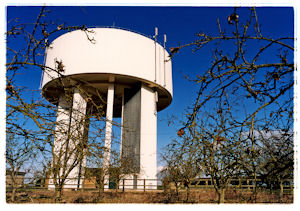Hot Shots is the Byard Art gallery’s first exhibition solely presenting photography. All of the photographer’s whose work is in the exhibition – David Anthony Hall, Richard Heeps, Noel Myles, Lin Osborn and David Rhys Jones – regularly exhibit at Byard, but this is the first time there has been such a large collection of their work in the gallery at the same time.
Noel Myles creates landscape photographs by bringing together dozens of negatives, taken at different times and from different angles, with the purpose of “evoking a broader experience of a place or an event than that of the transitory moment or single viewpoint”.
Southwold Harbour. Palladium on arches paper.
The "Mara cu" in Southwold. Platinum and palladium print.
This time last year. Lambola print on Kodak endura paper.
I really like the concept here, of each picture being made up of many others. I spent much longer studying each individual picture that makes up the piece as a whole.
Richard Heeps was inspired by his father during weekend trips exploring the fens during his childhood on weekend trips. “When my father left the car to take photographs, I sat in the back creating imaginary images of my own. Since then, I have returned to the Fens with my camera for many different projects, but I always seem to take pictures from the position of being contained in my own car (one very similar to my father’s) as I had done as a child.” For the Hot Shots exhibition , Richard is exhibiting limited edition, hand-printed photographs from 36 Minutes in Cambridgeshire which is a series documenting the Greenwich Meridian as it crosses the county.
52 degrees 21'N - Water Tower, Bluntisham, Cambridgeshire,2000. C-type hand printed from negative.
52 degrees 31'N - Life buoy, Cambridgeshire, 2000. C-type hand printed from negative.
52 degrees 35'N - Wisbech, St Mary's Wash, Cambridgeshire, 2001. C-type hand printed from negative.
Again I like the idea behind these pictures. I think out of all of Heep's photographs I prefer the image above as the composition is simple and I find it quite relaxing to look at.
David Rhys Jones is well known for his limited edition filmstrip ceramic plaques from photographic ‘journeys’ he has made around Cambridge. For Hot Shots, David is also exhibiting larger pieces from his series A Bloomsbury Journey – London and Sussex. “In the London’s Bloomsbury, he visited houses where members of the Group lived and walked the streets they must have walked. In Sussex, he traced the footpath across the fields from Charleston Farmhouse to Berwick Church, which Vanessa Bell and Duncan Grant would have walked each day during the period they were decorating the interior of the church.” Below I have chosen several of his ceramic plaques showing Cambridge.
The Round Church, photographs and ceramics, edition of 20.
University Cycles, photographs and ceramics, edition of 20.
University Library Books, photographs and ceramics, edition of 20.
I enjoyed looking at all of David's images around Cambridge because with a lot of them I was able to say "I know where that is" which really helps the viewer to be able to relate to the pieces.
David Anthony Hall produces large, panoramic landscape photographs, which are mounted onto acrylic block, up to 3 metres long. These images can take weeks or even years to produce as David waits for the right light and environment to take his photographs in. In 2010 he took around 16,000 exposures and fewer than 15 were turned into prints.
Beech Thicket.
Unfortunately this was the only images of David's that I was able to post on my blog. The sheer size of his photographs was huge! You really felt that you were inside the photo. I had a discussion with someone else visiting the gallery about where in your own home you could actually put them!
Lin Osborn uses a series of small detailed photographs to create her original artworks. The subjects she chooses are generally everyday objects or are taken from the natural world.
Doors.
Lamps.
London.
Lin's images really contrast with David's panoramic images although they are just as striking but in a different way. By repeating and repeating the series of images the original context of each individual image has been changed. Again I like how such a simple theme can have such an interesting effect as well as being visually attractive.
By visiting this exhibition I have really felt inspired to create something which does not necessarily have to have a complicated concept and can be on a scale. I now feel confident to go out an experiment with different ideas.
Information taken from www.byardart.co.uk













No comments:
Post a Comment